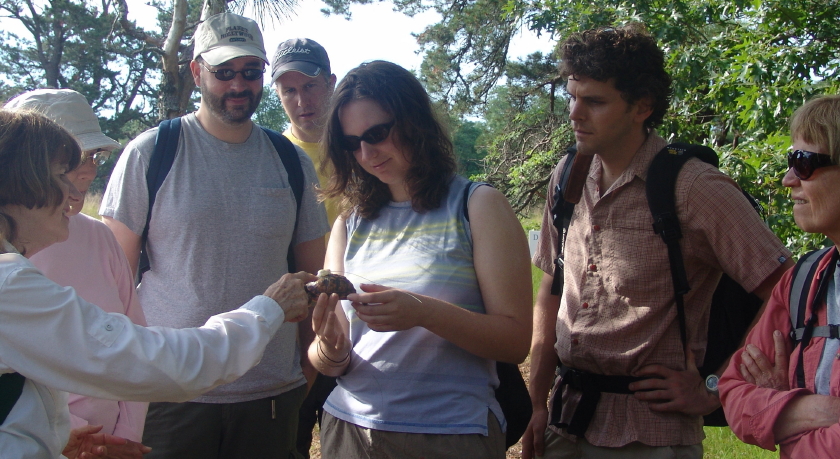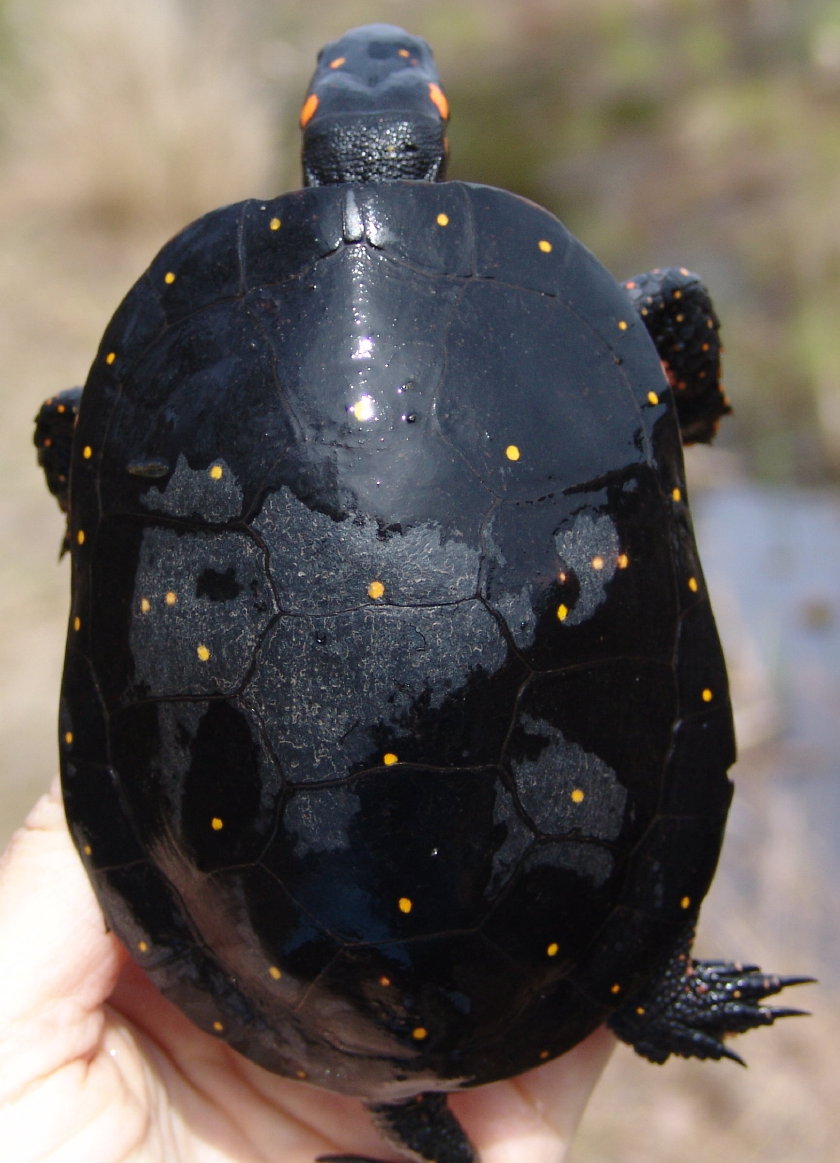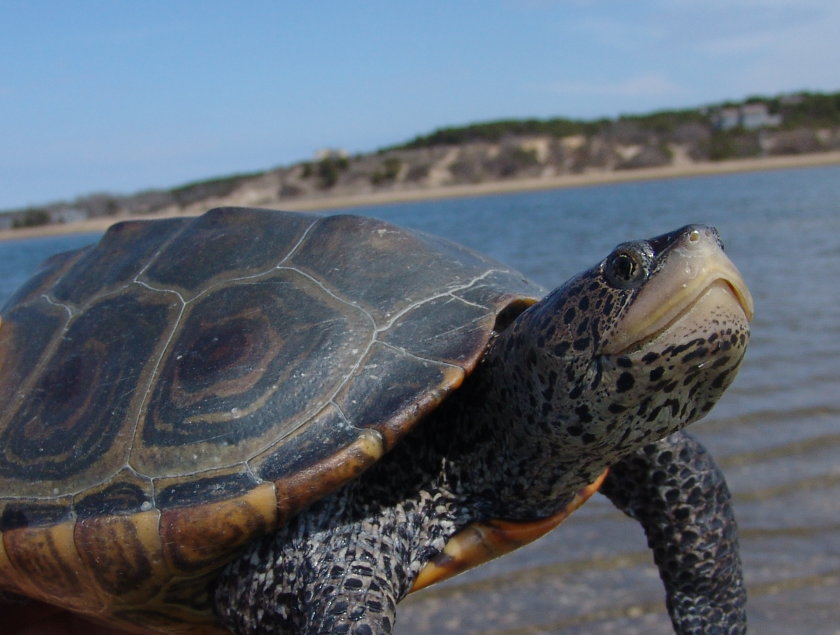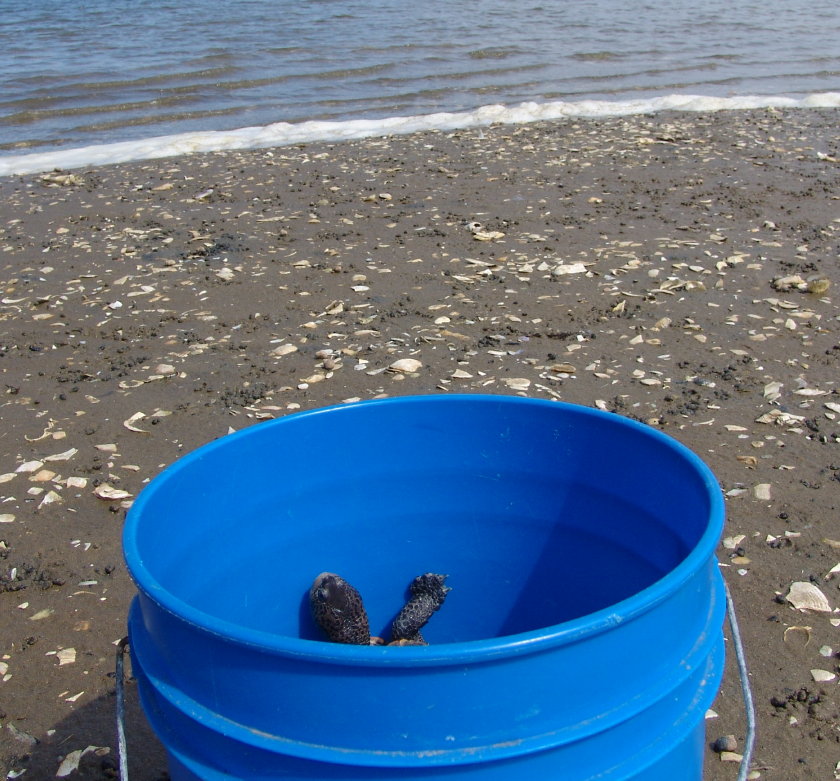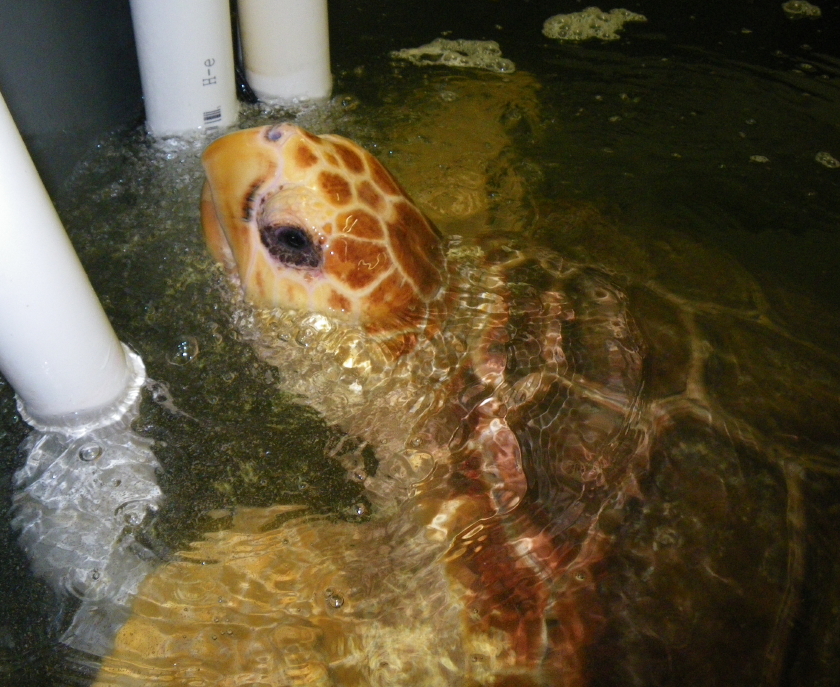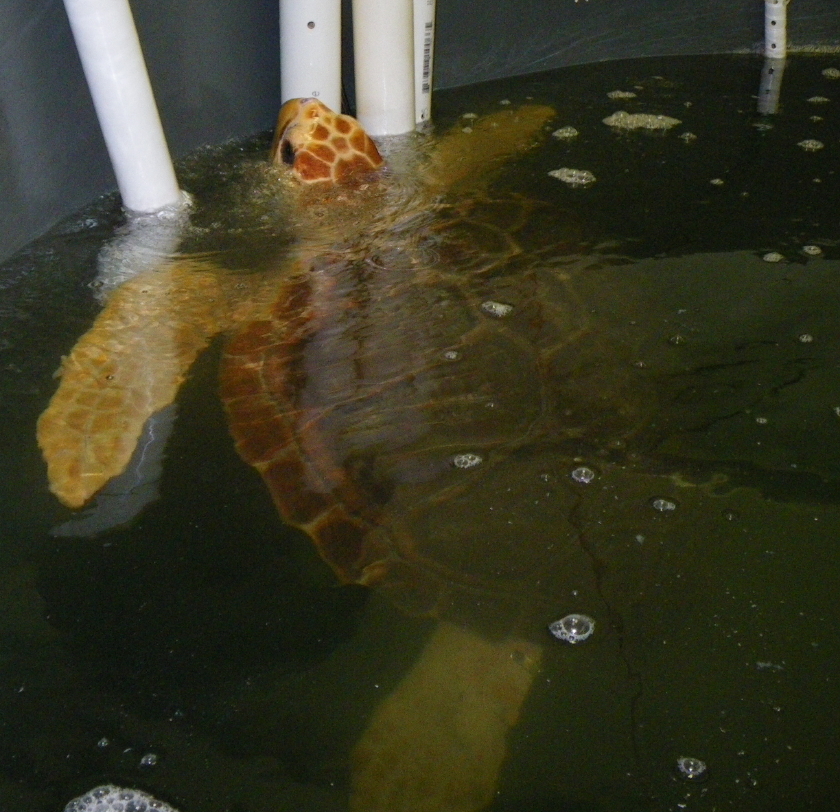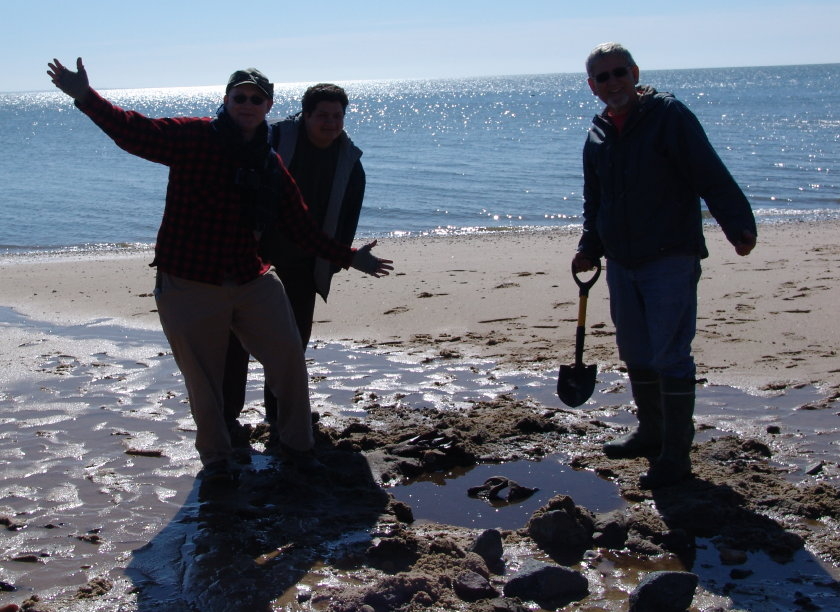Tidal Flats of Cape Cod (2008 Turtle Field School)
It’s a tough life, but someone has to live it. Each summer the Turtle Journal team and Mass Audubon’s Wellfleet Bay Wildlife Sanctuary offer people a unique opportunity to participate in hands-on, original field research on the Turtles of Cape Cod. For four exquisite days, participants discover the secrets of Cape Cod’s mysterious natural history as revealed by its diverse turtle species. The photograph above illustrates the arduous conditions of a day on the low-tide drained tidal flats of South Wellfleet at the kickoff of the 2008 field school.
Tracking Eastern Box Turtles (2008 Turtle Field School)
When frolicking in the surf in search of elusive terrapins proves a bit too arduous, our outdoor classroom migrates to abutting oak-pine woodlands of the pristine Wellfleet Bay Wildlife Sanctuary to learn about Eastern box turtles, as well as fresh water aquatic species. This young juvenile found for the first time by 2008 field schoolers was equipped with a small radio transmitter to tell us more about how box turtles use the habitat and to help us advance conservation of this species of special concern throughout Massachusetts.
Don’t miss the fun. There are only a few openings available each year as we limit field school size so that everyone gets individual attention and enjoys the excitement of hands on discovery. You can download an Adobe Acrobat (pdf) version of the field school catalogue and registration form by clicking here (fieldschool2009).
We hope to see you at this year’s Turtles of Cape Cod Field School. If you’d like to see more pictures and video clips from the 2008 adventure, you may visit our Turtles 2008 Facebook page. Sad as this statement is to say, the Turtle Journal team receives no remuneration, financial or otherwise, from the Turtles of Cape Cod Field School … other than the chance to meet some of our friends and colleagues in the most beautiful spot in the world, the Land of Ooze. BUT your participation does help to support Mass Audubon and its Wellfleet Bay Wildlife Sanctuary, and all the wonderful work that they do to save the nature of Massachusetts.

